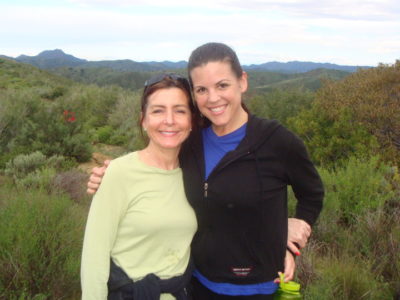Beyond “The Biggest Loser”
Not every journey, whether to a healthier lifestyle or a certain career path, follows a straight line. Mine has been no different.
After studying French in college and working as an international flight attendant, I decided to follow my heart and my passion for cooking by completing culinary training in San Francisco and France. I prepared mostly healthy fare in top restaurants and as a private chef in San Francisco. Across the Bay, I legitimized the “healthy” aspect of my cooking at UC Berkeley, earning my degree in Nutrition and Clinical Dietetics along with my RD (Registered Dietitian) credential. Unsure of what to do with my new and unique skill set, I moved to what I saw as a land of opportunity: Los Angeles!
In Los Angeles, I became the health editor for a culinary website, and I also worked part time on a research project at UCLA with my friend Susan Bowerman, the Assistant Director of their Nutrition Department. Being a part of a hit television show was the furthest thing from my mind.
One morning Susan introduced me to a colleague, Dr. Rob Huizenga, who was working as a medical expert on a television pilot for a reality show about extreme weight loss to be called “The Biggest Loser.” We really didn’t know if anyone would watch back then. It seemed kind of wacky—no one else had done anything of the sort. That, of course, was 12 seasons and more than 250 contestants ago; the rest is history.

Looking back, it’s easy to say we were pioneers in weight loss reality television—there are so many similar shows now. Though I’m happy our work inspired and continues to inspire so many, it’s bittersweet, because the obesity statistics are not going down.
Like the rest of “The Biggest Loser” medical expert team, my role was off camera but vital to the show’s success. Most of the air time was dedicated to the trainers, work outs, challenges, the occasional guest chef appearance (such as Curtis Stone) and, of course, the stories of contestants themselves.
What people didn’t see on camera was that I met with every one of the prospective cast members who flew to LA to vie for a coveted spot on the show. Each season, I met with approximately 75 finalists (who were culled from much larger pool of thousands) for a comprehensive nutrition consultation, which was one component of an entire week of medical and psychological testing before the final cast selections were made.
Once the cast was identified (anywhere from 12 to 50 people depending on the season), I shared a personally tailored calorie budget with each of them and instructed them on the eating plan for the show, which I co-wrote. I also taught them about shopping, measuring and weighing food, portion sizes, cooking tips and maintaining a daily food journal. From there, I tracked their food intake to ensure they were getting enough calories, protein, calcium, fiber and all of the other nutrients that comprise “The Biggest Loser” eating plan. And, over the course of 12 seasons, I shared my cell phone number with 250+ cast members and availed myself 24/7 if they had any food/shopping/nutrition/cooking questions, or if they just wanted to chat.
I never had any regrets about that. In fact, former contestants still call me to check in and I love hearing from them. Though it was incredibly rewarding to watch their knowledge grow (while their waistlines shrank!), my biggest regret was that I was only able to reach a small fraction of the overweight Americans who really need my help. And those who need me most can’t afford to hire me on their own.

This is ultimately one of the reasons I decided to move on. Although I’m extremely proud of what I accomplished with individual contestants in 12 seasons, I felt that there could be a way to reach and help many more people. I also realized my focus was on only one segment of the weight loss spectrum—from the morbidly obese starting point to the point of maintenance (or almost there). At the end of each season I had to stop there and circle back to start over again with a new season, never having enough time to dedicate myself fully to those who had achieved the lofty goal of reaching their maintenance weight, and helping them to stay there.
This year, I look forward with excitement to reaching a larger audience, on-camera and off, in person and remotely and in print, with you, at the Saturday Evening Post. I look forward to sharing my nutrition and culinary expertise with you. Whether you have questions about weight loss, weight maintenance, or healthy (but scrumptious!) eating and recipes—I look forward to answering them all and to sharing my stories with you about the urban farm I’m building in Napa, California.
Thanks for reading, and I look forward to knowing you better.
Join us again in two weeks for nutrition advice from Cheryl.

Cheryl Forberg RD is a New York Times bestselling author and a James Beard award-winning chef. Cheryl co-wrote the eating plan for NBC’s “The Biggest Loser” and was the show’s nutritionist for twelve seasons. Her latest book is Flavor First, and she writes a blog of cooking and nutrition tips. Follow her on Twitter and Facebook for more tips and recipes. And continue to read the Saturday Evening Post website for more regular nutrition tips and features from Cheryl.